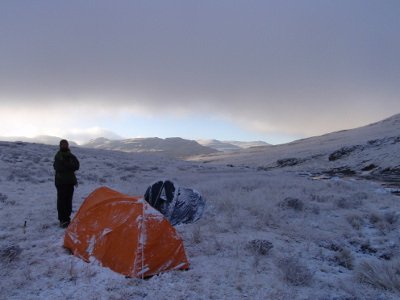Drakensberg water issues
30 Jun 2021 12:12 #77007
by GriffBaker
Drakensberg water issues was created by GriffBaker
www.pressreader.com/south-africa/mail-guardian/20210625/281702617682872
Interesting article about water issues on the escarpment.
Interesting article about water issues on the escarpment.
Please Log in or Create an account to join the conversation.
- GriffBaker
-
 Topic Author
Topic Author
- Offline
- Elite Member
-

Less
More
- Posts: 121
- Thank you received: 183
02 Jul 2021 07:57 #77009
by firephish
Replied by firephish on topic Drakensberg water issues
glad someones talking about it, the Lesotho side of the escapement is a depressing disgrace in some areas.
Please Log in or Create an account to join the conversation.
06 Jul 2021 01:38 - 14 Jul 2021 21:56 #77018
by intrepid
Take nothing but litter, leave nothing but a cleaner Drakensberg.
Replied by intrepid on topic Drakensberg water issues
Question: what could we, the public, do towards a solution?
Take nothing but litter, leave nothing but a cleaner Drakensberg.
Last edit: 14 Jul 2021 21:56 by intrepid.
The following user(s) said Thank You: GriffBaker
Please Log in or Create an account to join the conversation.
07 Jul 2021 16:06 - 07 Jul 2021 16:08 #77025
by tiska
For decades I believed the great threat to the Berg was from the lower altitudes, from the SA side, with ingress of tourism, pressure from subsistence agriculture, new roads, commercial forestry and so on. That a serious problem could ever come from Lesotho seemed implausible. That view was based largely on the experience I had of the escarpment being a real wilderness. I recall walking from Rockeries in Mnweni to the Sentinel car park one Easter without seeing a soul. These days parts of the escarpment are like a farm yard.
Stable solutions depend on a sound understanding of the problem.
Why is the environment on the escarpment degrading and what are the drivers?
In the time I have been going to the Berg, there has been a very obvious expansion of the human population close to the escarpment and along with that what seems to be an increase in the relative material wealth of the people - i.e. the current account, i.e. livestock.
For a long time it has been a goal of development agencies and the government to improve the livelihoods of people living in this region, so it shouldn't be a surprise that this has emerged. Population has more than doubled in a great many developing world settings too. I would guess that the dam building that brought better roads has accelerated pressures and the ground into which expansion could occur lay not towards lower altitudes but towards the escarpment. Crucially the area is essentially unprotected by law, unlike much of the SA side of the Berg. It is also probably true that cash crops in the form of dagga have added to the 'current accounts' of farmers on the escarpment. Climate change has led to milder winters. It was the deadly weather that would drive people away from the higher altitudes.
Many vectors of change are now in the same direction.
Where does this leave us with regards to solutions? Education about land degradation is an important responsibility of those agencies that promote development. If this doesn't happen, then their gains will be undone 'Grapes of Wrath' style.
Replied by tiska on topic Drakensberg water issues
Question: what could the we, the public, do towards a solution?
For decades I believed the great threat to the Berg was from the lower altitudes, from the SA side, with ingress of tourism, pressure from subsistence agriculture, new roads, commercial forestry and so on. That a serious problem could ever come from Lesotho seemed implausible. That view was based largely on the experience I had of the escarpment being a real wilderness. I recall walking from Rockeries in Mnweni to the Sentinel car park one Easter without seeing a soul. These days parts of the escarpment are like a farm yard.
Stable solutions depend on a sound understanding of the problem.
Why is the environment on the escarpment degrading and what are the drivers?
In the time I have been going to the Berg, there has been a very obvious expansion of the human population close to the escarpment and along with that what seems to be an increase in the relative material wealth of the people - i.e. the current account, i.e. livestock.
For a long time it has been a goal of development agencies and the government to improve the livelihoods of people living in this region, so it shouldn't be a surprise that this has emerged. Population has more than doubled in a great many developing world settings too. I would guess that the dam building that brought better roads has accelerated pressures and the ground into which expansion could occur lay not towards lower altitudes but towards the escarpment. Crucially the area is essentially unprotected by law, unlike much of the SA side of the Berg. It is also probably true that cash crops in the form of dagga have added to the 'current accounts' of farmers on the escarpment. Climate change has led to milder winters. It was the deadly weather that would drive people away from the higher altitudes.
Many vectors of change are now in the same direction.
Where does this leave us with regards to solutions? Education about land degradation is an important responsibility of those agencies that promote development. If this doesn't happen, then their gains will be undone 'Grapes of Wrath' style.
Last edit: 07 Jul 2021 16:08 by tiska.
Please Log in or Create an account to join the conversation.



